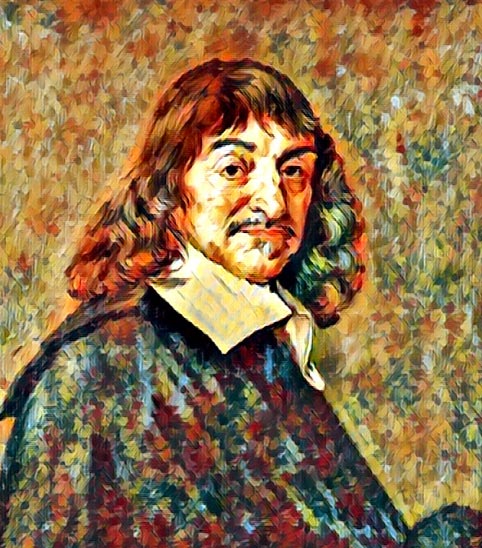
René Descartes was a French philosopher and mathematician who is widely considered to be the father of modern Western philosophy and the founder of analytic geometry. He was born on March 31, 1596, in La Haye, France and died on February 11, 1650, in Stockholm, Sweden.
Descartes was a highly intelligent and curious individual from a young age. He was educated at the Jesuit College of La Flèche, where he excelled in mathematics and classics. After completing his education, he traveled extensively throughout Europe, studying mathematics and physics and meeting with other intellectuals of his time.
In 1628, Descartes returned to France and began working on a series of mathematical and philosophical ideas. In 1637, he published "La Géométrie," which introduced the world to the Cartesian coordinate system. This system, which is based on a set of perpendicular axes, greatly simplified the process of solving geometric problems and made it possible to apply mathematical concepts to geometric shapes.
In addition to his work in mathematics, Descartes was also a prominent philosopher. His most famous philosophical work, "Meditations on First Philosophy," was published in 1641. In this work, he famously declared "Cogito, ergo sum" (I think, therefore I am), which became the foundation for his philosophy of mind. He also proposed a new way of understanding the natural world, through the scientific method and skepticism, as a way to gain knowledge.
Descartes' work had a profound impact on the fields of mathematics, physics, and philosophy. His ideas about the scientific method and skepticism influenced the development of modern science, and his work in analytic geometry laid the foundation for the field of calculus.
However, Descartes' work was not always well-received by the authorities of his time. He was criticized by the Catholic Church for his views on the natural world and his rejection of traditional Aristotelian philosophy. In 1637, he was forced to move to the Netherlands, where he lived for the next 20 years. He died in Stockholm, Sweden in 1650, where he had been invited by Queen Christina to establish a scientific academy.
The following book may be of interest: A History of Mathematics, (3rd Edition)
Related articles:
- Andrew Wiles (1953)
- Blaise Pascal (1623-1662)
- Carl Friedrich Gauss (1777-1855)
- Cartesian Coordinates
- Edward Haskell Moore (1862-1932)
- Gottfried Wilhelm Leibniz (1646-1716)
- Isaac Newton (1643-1727)
- John Napier (1550-1617)
- Joseph Diaz Gergonne (1771-1859)
- Leonhard Euler (1707-1783)
- Pierre de Fermat (1607-1665)
- Roger Cotes (1682-1716)
